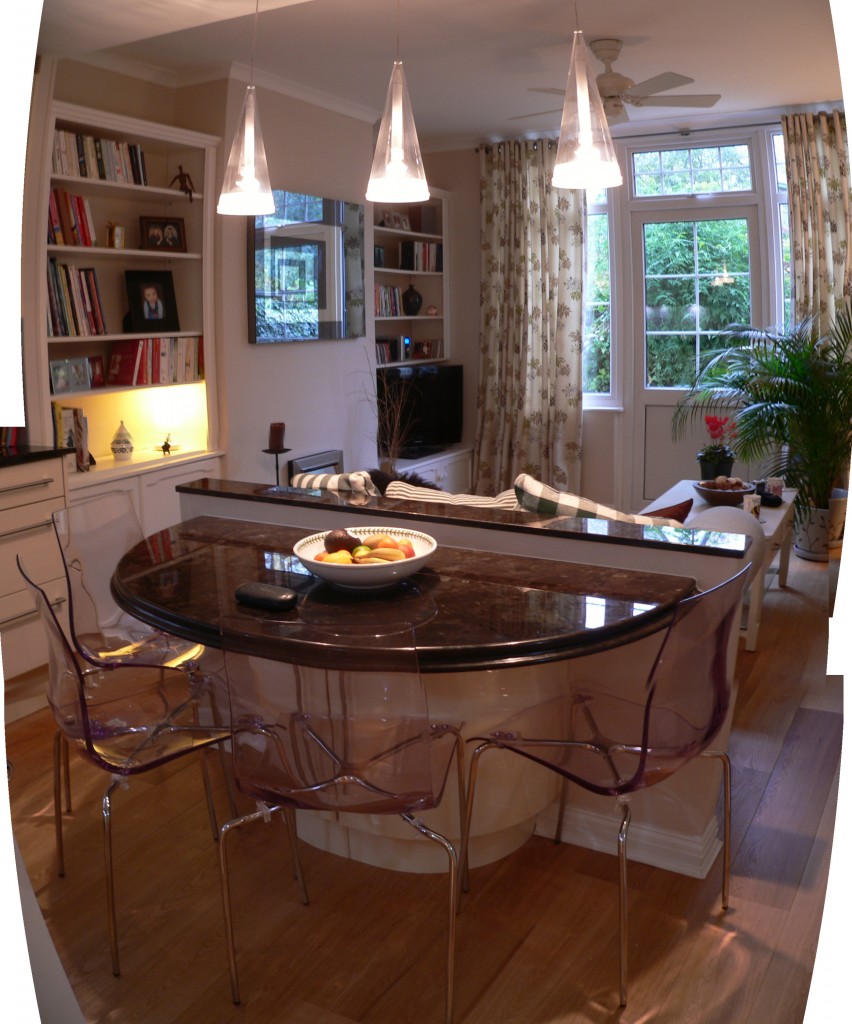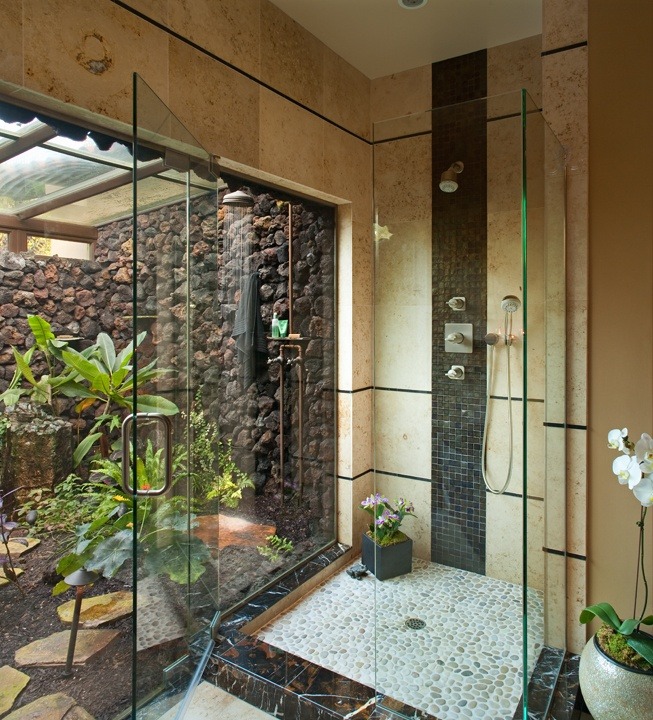
30 Builder’s Terms or Slang You Might Find Useful
It’s not for everyone, but it helps to know the lingua franca. If you have the local accent, even better (“bet’ah”). Innit.
- CHIPPY (sl.): Not the Chinese takeaway cum fish and chip shop, but a slang for carpenter. eg “Yeah. We’ll ge’ th’ chippy knock owt tha’ stud wall.”
- SPARKY (sl.): electrician.
- COURSE: a horizontal row of bricks. eg “O’course, mate. Tha’s a course.” Soldier course is a top row laid horizontally but with the bricks vertical (ie portrait not landscape) and usually found on the top of a wall or top course (known as header course) of a window opening.
- CLOSER: A brick that has been halved lengthways.
- MUCK (sl.): Sand and cement mortar, the sandwich filling between bricks or blocks.
- HERRINGBONE or BASKETWEAVE: These are zigzag brick patterns popular for driveways and patios. The herringbone is interlocking zigzags and the basketweave is crossed interlocking motifs.
- DOT AND DAB (sl.): a technique that was developed to replace traditional wet plastering and now frequently used in new buildings. The ability of plasterboard to be directly attached to masonry makes it quicker and cheaper than wet trades.
- SCREED: Sand/cement floor layer that comes after the concrete slab. It will be a smooth finish and can underfloor heating pipes embedded into it and flooring directly onto it as it is a smooth substrate. Self-levelling screed is as described, it is like a liquid cake mix that levels out as it is poured into the mould.
- FIRST FIX (sl.): This is the construction stage consisting of all stages up to and including wiring and plumbing but not plastering, or finishes such as tiling and flooring.
- SECOND FIX (sl.): All the jobs completed after plastering is finished, i.e. finishes and fittings (sanitaryware, lighting, tiling, flooring, decorating).
- PARTY WALL: Ain’t no party here. It is the wall that legally separates properties, such as in terraced houses. It contains the imaginary boundary line between ownerships.
- FLASHING: A metal sheet (lead, aluminium) that waterproofs junctions, such as between a wall and a roof.
- GABLE: The triangular upper part of a wall that supports a pitched roof, which would butt up against it.
- JAMB: a side post or surface of a doorway, window, or fireplace. Note that this is not the reveal. The jamb is a piece of construction that’s part of the window or door and not the wall opening.
- REVEAL: vertical side surface of a window opening visible due to the thickness of walls and relative thinness of windows. Reveals can be in a different material or finish to make the design of the window stand out. Can be rendered or can be finished in wood or metal, for example.
- JOIST: a type of beam, usually rectangular or square in section if in timber or I-shaped in metal supporting a floor or ceiling.
- PURLIN: A horizontal timber or steel beam halfway up a roof that gives extra support.
- BATTEN: More of the mini purlins in timber or steel to support the roof tiles or slates or sheet roofing.
- MAKE GOOD: Simply means to make OK only, i.e. repair plaster and paintwork after construction work, but not in a very pretty or finished way. Requires decorating or finishing after.
- SKIM: final coat of plaster
- STACK: vertical waste pipe from sinks and toilets.
- DS: Not Drug Squad but District Surveyor. Also known as “the council bloke”, “building inspector” or “the inspector”.
- PAINTER’S MATE (sl.): this is not a person. This is the best known brand of decorator’s flexible caulk, and therefore synonymous with it. Caulk is a gunk. See below.
- GUNK UP (sl.): to fill with caulk (see above), polyfiller, Gripfill or No More Nails.
- FLOATING FLOOR (sl.): not actually levitating like a guru but a floor which is interlocking (see tongue in groove) and therefore not nailed or glued down but left free of fixings so that the timber can expand to the side walls and not start warping or popping.
- POPPING (sl.): onomatopoeic word to describe nails or screws coming up after some time due to movement and weather frequently seen in modular or off-site or timber buildings, or floorboards, cladding which pop due to inadequate fixings. eg “Well yeah. Claddin’s been poppin innit. It’s shot.” (see below). Just popping in: what you say in the site office if you don’t really want to stay for the meeting. Just popping out: if you need to escape into the civilian world beyond the hoarding for a short while. Popping off: dying or leaving. Popping the cork: enjoying life.
- SHOT (sl.): ruined, useless, worn out, requires replacing.
- TONGUE IN GROOVE: still gets a few titters on site but describes the male-female T-shaped timber profiles (see below) which enable interlocking of floorboards.
- PROFILE (sl.): this is not your social media bio or description but the cross section pattern of traditional timber mouldings or for example, architraves could have ogee, reeded, chamfered or astragal profiles and skirtings could be also ogee, quadrant, bullnose, ovolo etc.
- BUILDER’S TEA (sl.): AKA builder’s brew, is a strong cup of tea that looks almost black and opaque before milk is added. Cheap, strong with two sugars and semi-skimmed milk (green top), it is mandatory and customary for this beverage to be made and drunk in the site office with Capital FM blaring. If you are drinking it at home in centrally heated comfort listening to acid jazz, it’s not builder’s tea. It is the drink that has traditionally fueled the British construction industry but recent demographics (2013) have shown that the preferred builder’s beverage is now cappuccino or latte.
- BONUS BONUS BONUS. Cockney rhyming slang. POETS’ DAY (sl.): Friday. Piss Off Early, Tomorrow’s Saturday. eg “Yeah well th’inspector ain’t comin now. I been waitin all day an’ it’s Poet’s Day innit. Poppin off shortly, see ya Monday.”
In line with item no. 30, to reflect current demographics, my next article will be 30 Builder’s Terms or Slang in POLISH Which You Might Find Useful. If you liked these terms, please follow my next post.
If you enjoyed this article, please share. As usual I would love to hear from you. All comment and feedback welcome.
Written by Ivy Ngeow B.Arch (Hons) MA RIBA © 2019 All rights reserved
Tweet me @ivyngeow
#womeninarchitecture #thepracticeblog



